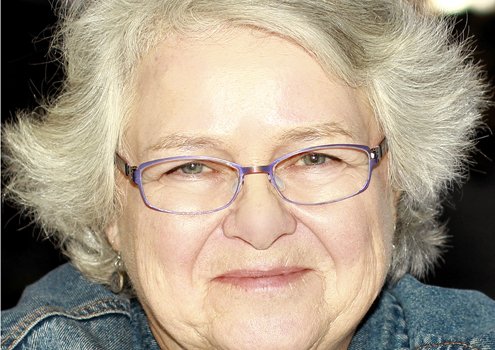Reading time: Less than 1 minute
I like to share interesting pieces of figurative language I encounter in my reading. I write today about a series of similies and metaphors from omaopy editor Mary Norris….
The majority of people who are really good at grammar often aren’t hugely creative. It’s almost as if talent in one arena precludes us from talent in another. Or, at least, that’s what I have found.
But self-described comma queen and New Yorker editor Mary Norris has turned that pattern on its ear with her delightful — and hilarious — memoir and grammar book, Between You & Me. Read my list of her best figurative language, below, and then, more importantly, read the writing of Mary Norris. She’s charming and funny and very wise. (Check her explanation of the difference between who and whom, for example.)
- When McPhee uses an unfamiliar word, you can sure that it’s the only word for what he’s trying to say, and he savors it, he rolls the syllables in his mouth as if words were food and he were licking his chops.
- Regularly, my grasp of the subjunctive slips, and I need to visit the grammatical equivalent of a chiropractor.
- Spelling is the clothing of words, their outward visible sign, and even those who favor sweatpants in everyday life like to make a bella figura, as the Italians say — a good impression – in their prose.
- Not long ago, a young editorial assistant getting her first tour of the New Yorker offices paused at my door to be introduced, and when she heard I was a copy editor she jumped back, as if I might poke her with a red-hot hyphen or force-feed her a pound of commas.
- The whole point of having things read before publication is to test their effect on a general reader. You want to make sure when you go out there that the tag on the back of your collar isn’t poking up — unless, of course, you are deliberately wearing your clothes inside out.
- She treated everyone the same, be it Marcel Proust or Annie Proulx, Nabokov or Malcolm Gladwell. Clarity was Eleanor’s lodestar, Fowler’s Modern English her bible, and by the time she was done with a proof the pencil lines on it looked like dreadlocks.
- The punctuation is almost like Braille, providing a kind of bas-relief, accentuating the topography of the sentence.
- I once made “hairstyle” one word, having found it in Webster’s, and Lu appeared in my doorway instantaneously, like a fire engine screaming around the corner two seconds after you’ve pulled a false alarm.
- Punctuation is a deeply conservative club. It hardly ever admits a new member. In the sixties an adman invented the interrobang, a combined question mark and exclamation point, but it did not catch on. Still, considering that we have only a handful of tools — think of them as needles and pins in a sewing kit, or drill bits and screws in a tool chest — the variety of tics that writers develop and the effect that they create is astonishing.
- Part of my routine is sweeping the eraser crumbs off my desk like foundry dust after every job.
[Photo credit: ©2019 Larry D. Moore. Cropped. Licensed under the the Creative Commons Attribution 4.0 International license.]


